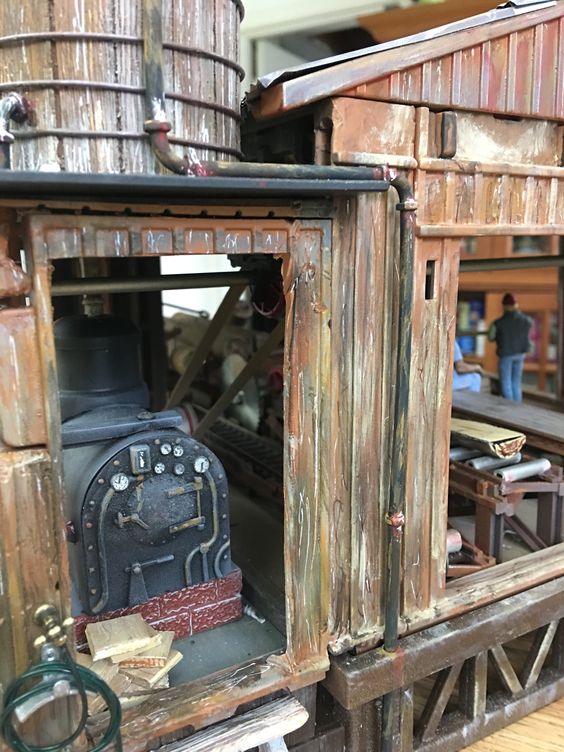

Playmobil Sawmill part #1
Posted this a while back in the gallery but never explained the build. Some time ago I started a project using playmobil building parts, really like using them as they are so adaptable and at 1 time fairly inexpensive. I decided on a sawmill, which I know nothing about but then again that never stopped me before. I had several different wall sections and a kit that playmobil had produced several years ago to expand their safari set. It included base parts for lifting the building off the ground. Didn’t want mine to be too high so I cut the sections in half from left to right. Used the lower section for the base of the building and the upper for the rafters joining wall sections together.
Came up with a design that fit the parts, and with a few minor adjustments 4 walls + side shed were up. Bonus find of a covered awning section and I was able to expand a loading area to the other side. As things began to come together I discovered that I had build the building backwards and needed a mirror image to make things work. Had already glued the building together and it was too late to change. More research, found I would have to pull logs in rather than dumping them in the carriage, more research. Found a article in GRW magazine entitled out fitting a sawmill by Don Parker, it was from Oct 2000 in where he had taken a garden texture sawmill by Bob Kelley and built a very detailed to scale model. The model was a little beyond my ability and scope, Don had built a master piece and I was trying to build one that uses left over pieces. I know when I’m trumped. Rene Schweitzer of GRW was very helpful and sent me copies of the article which I found invaluable. Thanks Rene!!! Started with the log carriage and made it out of the ore tipper cradles from HLW ore tipper cars, brass rod and paper clip parts, Used HO wheels placed on a plastruct “I” beam. Secured the HO track to sections of aristo-craft hi-tension transmission tower “X” frame girder parts. Also used the same parts for the lumber roller table. Passed a small cable from one end of the carriage track to the other to give the looks of the cable that transports the log carriage to and fro. The roller table I placed small cut pieces of 1/4"aluminum tubing to simulate transport rollers and placed the assy on table legs made with 1/4" evergreen styrene installing cross bracing using smaller evergreen. Saw blade and operation pieces to come later.

















